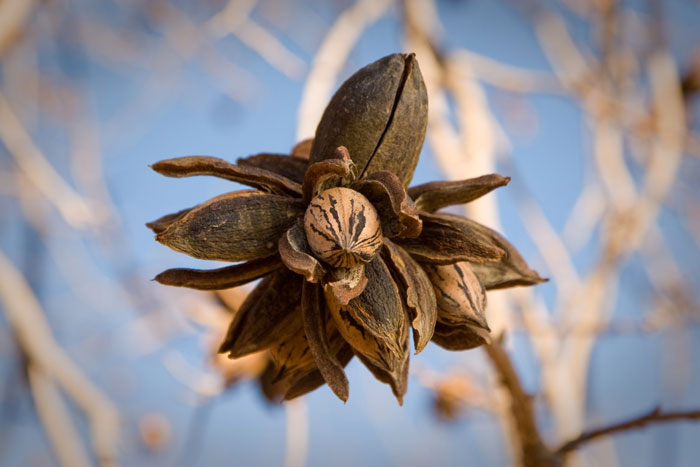July 6, 2016

Following the nation’s pecan growers’ overwhelming approval in March of a historic federal marketing order (FMO) for pecans, the American Pecan Council (APC) has been organized as the governing board to oversee the implementation and operation of the new program.
The council could open its doors for business as early as October and collect assessments from handlers on the 2016 U.S. pecan crop.
The assessment ranges from 1 cent to 3 cents per pound in-shell depending on the pecan category and grade. It’s designed to strengthen and expand the U.S. pecan market through improved pecan marketing.
This process will include collecting data; conducting research and promotion activities; and regulating the grade, size, quality, pack, and containers for pecans grown in Alabama, Arkansas, Arizona, California, Florida, Georgia, Kansas, Louisiana, Missouri, Mississippi, North Carolina, New Mexico, Oklahoma, South Carolina, and Texas.
“It’s a self-help program, developed and administered by the industry, which will use pecan industry money, not government funding, for the benefit of the industry and our consumers,” says Texas pecan grower Mike Adams who lead the five-year effort to establish the FMO.
Adams says the marketing order resembles other marketing orders used by almond, walnut, pistachio, avocado, citrus, and other commodity groups designed to build demand for the crops, even as acreage expands.
“The pecan industry has always had a preferred product and a great story to tell, but we haven’t told it very well,” he says.
“By unifying our industry, this marketing order will allow us to catch up with other farm commodity groups and more effectively promote our product than any one group of pecan growers or shellers have done in the past.”
The APC will consist of 17 members and 17 alternates. Each pecan-growing region (East, Central, and West) will have three growers and two sheller members, and the same number of alternates. They will select the remaining two members (an accumulator and a public member) and two alternates as at-large members.
Nominations will begin once the FMO’s final rule is published in the Federal Register which could be as early as this month. Growers and shellers would vote on the nominees.
A staff directed by the APC will conduct the actual day-to-day FMO operations.
“Never before had we had an organization representing all constituents of the pecan industry which goes to work every day on our behalf. This will benefit growers and shellers, and our consumers,” says Adams.
Several previous attempts were made over the last 50-plus years to improve pecan marketing by uniting constituent groups within the pecan industry. Each effort came up short - until now.
The successful FMO effort began in 2011 when a handful of growers met informally in Dallas, Texas, including Louie Salopek of New Mexico, former president of the Western Pecan Growers Association.
“The writing was on the wall,” Salopek says.
Pecan growers in the U.S., Mexico, South Africa, and other countries were planting more pecan trees.
“We were looking at the potential for worldwide production to potentially double in the near future and we wanted to get ahead by expanding the pecan market.”
Salopek notes, “We (U.S.) didn’t have a smooth-working industry. Growers and shellers in one region didn’t share much information with those in other regions.”
The meeting sparked conversations with growers and shellers across the nation which led to the formation of the American Pecan Board (APB) in May 2013. The volunteer board included three growers, three shellers, three grower-shellers, and two independent advisors, representing all three pecan regions.
“For the first time, we had a single entity of growers and shellers who represented all segments of the pecan industry,” says Adams, who was elected board president. “This group of individuals has worked unselfishly to advance the industry.”
Six months later, APB board members met with USDA officials to consider various alternatives for funding a strategic, industrywide marketing program.
Adams says, “We came away convinced that a federal marketing order was the best fit for our industry. It offered more promise of succeeding than the four previous attempts.”
The APB spent the next year discussing the proposed program with growers and shellers across the country.
“It was a ‘listening tour,’” says Adams. “We wanted to learn what different stakeholders in the industry wanted in a marketing program.”
Board member Salopek took part in the effort, including one-on-one meetings with growers and shellers.
“It involved a lot of work and travel and was about as close as I’ll ever get to politicking,” he says. “It was a great experience and I wouldn’t trade it for the world.”
Based on the findings from listening sessions, the Board met with USDA officials and marketing specialists in January 2015 to begin the process to develop proposed FMO rules. Four months later, U.S. Secretary of Agriculture Tom Vilsack and agency Under Secretary Edward Avalos agreed to proceed with the proposal.
In July 2015, public hearings included 55 witnesses and 60 hours of testimony in Tifton, Ga., Dallas, Texas, and Las Cruces, N.M. where the industry supported the proposed FMO.
This March, Secretary Vilsack called for a FMO grower referendum. Once the votes were tabulated, 77 percent of the voting growers, representing 88 percent of the volume, supported the marketing order. The referendum overwhelmingly passed.
Adams says, “This vote was very encouraging. It affirmed the hard work of the American Pecan Board members in developing the FMO. Now, our industry is more unified than ever before and is ready to move forward.”
You May Also Like




